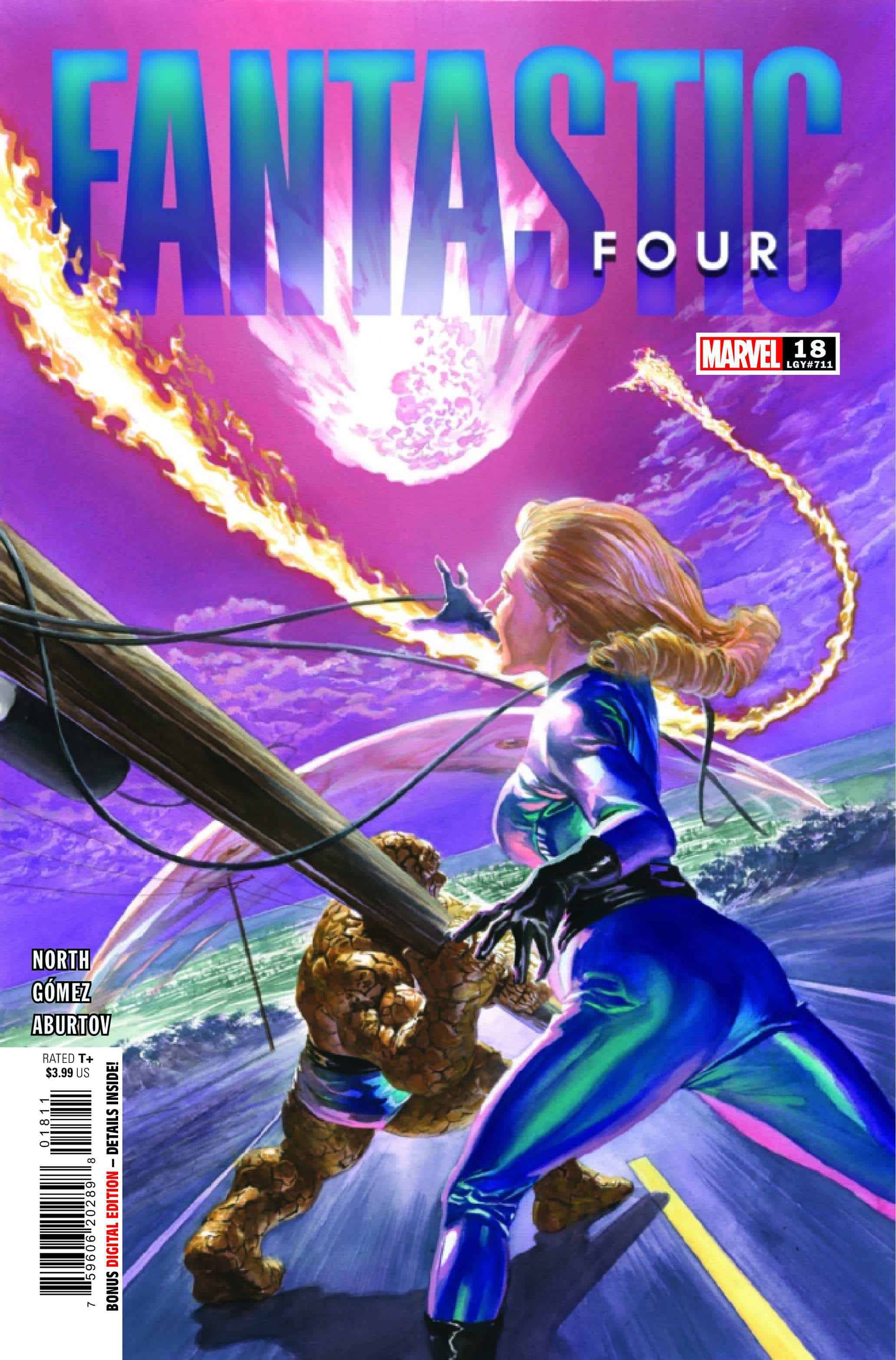Fantastic Four #18

Recap
THE SECRET OF FRANKLIN RICHARDS! Franklin Richards has been an immortal, a god, an Omega-level mutant - and more. He's created life, entire universes, and been worshipped for it. He's ended life and been cussed out with just as much sincerity. But there's something else Franklin Richards has done - and is doing - that nobody else in the universe knows about.
Review
Life isn’t easy for Franklin Richards. He’s created life, destroyed life, aged himself up, aged himself back down, and seen all manner of future versions of himself. His life got easier when he was depowered. Or was he? The very clever Fantastic Four #18 takes a look at Franklin Richards and opens up new possibilities for the character.
Fantastic Four #18 catches up with Franklin Richards on the one night a year where his full powers manifest and he has the ability to use them. In order to be a mostly normal kid and avoid growing into the worst possible version of himself, Franklin came up with a solution to controlling his powers “a while back.” He locked his powers away, hidden even from himself, except for one night a year. The rest of the time, he doesn’t even know he has his powers. On this particular night, he discovers invisible asteroids heading toward the planet. Knowing what he does about the universe and his family, he “foresees” what will happen: the Fantastic Four will try to save everyone from the asteroid impacts. Johnny will highlight the asteroids with fire in the hope that Sue can see and stop them. Reed will stretch himself into a protective dome in the hope of catching the asteroids. But the team will fail and die in the process. To avoid that outcome, Franklin adjusts the asteroids’ course. But something goes wrong after Franklin makes his change, putting Earth and his family at risk of repeating the same tragic outcome.
The most important story in Fantastic Four #18 is the one that frames the asteroid assault. After introducing readers to all of the Fantastic Four’s kids in issue 16, North takes a deep dive on the most complex one. Franklin’s power set and background is a complicated subject. North provides an extremely abridged history in Fantastic Four #18’s opening pages. He follows this with a bit of a revelation: Franklin isn’t actually depowered. Rather, he consciously hid his powers from himself. North’s story choice here is clever to the point of high strategy. North re-powers Franklin following his apparent loss of abilities in the previous Fantastic Four volume while simultaneously explaining why those abilities won’t be available on a regular basis.
North’s interesting Franklin-centric story adds a major storytelling toy to his toy box with surprisingly little fanfare. There was no reason coming into the issue to expect a major revelation about Franklin’s powers, nor is there any indication that they will play an important role in the near future. North also establishes limits on Franklin’s abilities. Franklin isn’t omniscient–he can’t see where the asteroids came from or why they’re invisible. And Franklin can’t see the future–he can only extrapolate out from what he knows and, as demonstrated in this issue, that can be very fallible despite the vast knowledge he has access to.
The asteroid assault storyline that is framed by Franklin’s story is likewise clever, though in a very different way. The first time through it seems fairly straightforward–there’s a weird sci-fi threat to the planet, and the team has to stop it. Everything proceeds somewhat predictably for a while in that it looks like, despite the odds, the team will prevail again–until, of course, they don’t. When it’s revisited the second time, the storyline becomes a vehicle to further build up the strength of the Fantastic Four not just as a team of four superheroes but as a family that includes everyone–an ongoing theme in the series.
Aburtov’s coloring takes center stage in Fantastic Four #18. His work repeatedly shines in this series, especially in some of the more fantastic issues. In this case, the psychedelic effect for Franklin’s aura and the unreal coloring on his skin and clothes (not a photo negative effect, but an appearance that feels just as strange) conveys a level of power beyond anyone else in this series. It also sets the powered version of Franklin apart on a visual level, detached even from his non-powered self.
The other standout coloring work comes during the asteroid sequences. Aburtov fills the night sky with columns and explosions of red, orange, and yellow. The fiery asteroids tearing through Reed’s almost translucent body is a horror show.
Gómez’s contribution to the appearance of superpowered Franklin is to give him a blank, seemingly disinterested expression. As with Aburtov’s coloring, Gómez’s work here creates a detachment between Franklin with powers and Franklin the rest of the time.
Gómez makes a smart choice during the first asteroid sequence. Johnny is lighting the asteroids on fire so Sue can see them. Gómez doesn’t draw the asteroids fully engulfed in flames. Rather, the invisible asteroids merely trail flames which creates the effect of flaming claws reaching toward the ground as they tear through Reed.
Caramagna doesn’t get to play with sound effects often in Fantastic Four, but the second time through the asteroid sequence offers a wonderful opportunity for him to contribute to an overall vibrant conclusion. It’s a welcome inclusion.
Final Thoughts
“Smart” is an adjective that can be applied to almost every issue in Ryan North’s Fantastic Four run. In the case of Fantastic Four #18, it applies to Franklin’s character development and the ease with which his status quo is adjusted. Perhaps this will prove to be a milestone issue. But for now it’s just a good story about a kid who wants to be a kid.
Fantastic Four #18: Franklin’s Secret
- Writing - 9.5/109.5/10
- Storyline - 8.5/108.5/10
- Art - 8/108/10
- Color - 9.5/109.5/10
- Cover Art - 8.5/108.5/10





